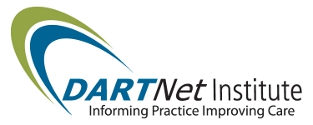Technology > OMOP
Observational Medical Outcomes Partnership
The Observational Medical Outcomes Project (OMOP) is a public-private partnership between the FDA, the Pharmaceutical Research and Manufacturers of America, and the Foundation for the National Institutes of Health. This interdisciplinary research group is tackling the surprisingly difficult task of identifying the most reliable methods for analyzing huge volumes of data drawn from heterogeneous sources. The problem is critical to enabling comparative effectiveness research, which requires data from all sources to be in the same format.
The DARTNet Institute investigators are using the OMOP common data model and licensed vocabularies as the starting point for creating a common data model among DARTNet Institute clinical partners. See more about the collaboration on the OMOP site.
OMOP Common Data Model - Version 4.0.
SAFTINet uses a modified version of OMOP Common Data Model V4. Early in the development process, SAFTINet adopted OMOP Common Data Model V3 as the data structure to use, but quickly recognized that some additional tables and variables were needed to conduct comparative effectiveness research. The SAFTINet team collaborated with OMOP and researchers from the SCAlable National Network for Effectiveness Research (SCANNER) to modify version 3. Most of the SAFTINet changes were incorporated into OMOP Common Data Model V4. Some of the changes were not incorporated into V4, but SAFTINet still needs them, so we are using a modified version of the OMOP Common Data Model V4.
OMOP Standard Vocabulary - Version 4.0
Local codes extracted from each clinical partners data are transformed into concept IDs stored in the OMOP Vocabulary tables. OMOP Vocabulary tables contain concept ids for codes from many different vocabularies including SNOMED-CT, RxNorm, CPT, etc. Using the DI specifications, partners extract, transform, and load data from their CDW into the extractions-transformation-loading view of the SAFTINet OMOP Common Data Model, which is in XML format. The XML is fed into the Reusable OMOP and SAFTINet Interface Transformation Adaptor (ROSITA).

